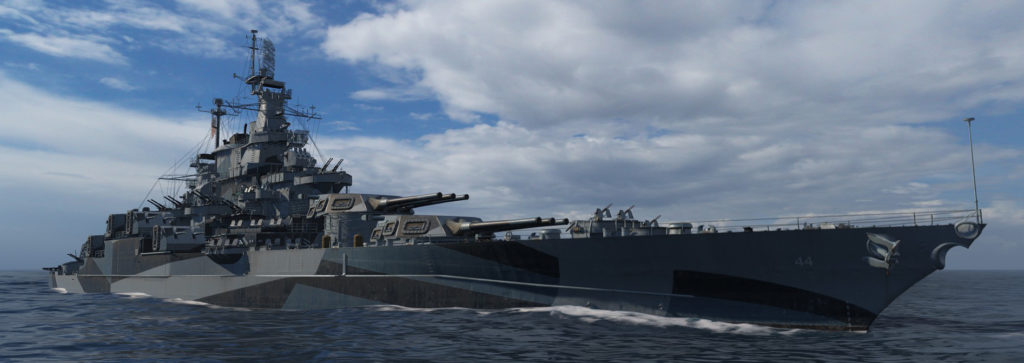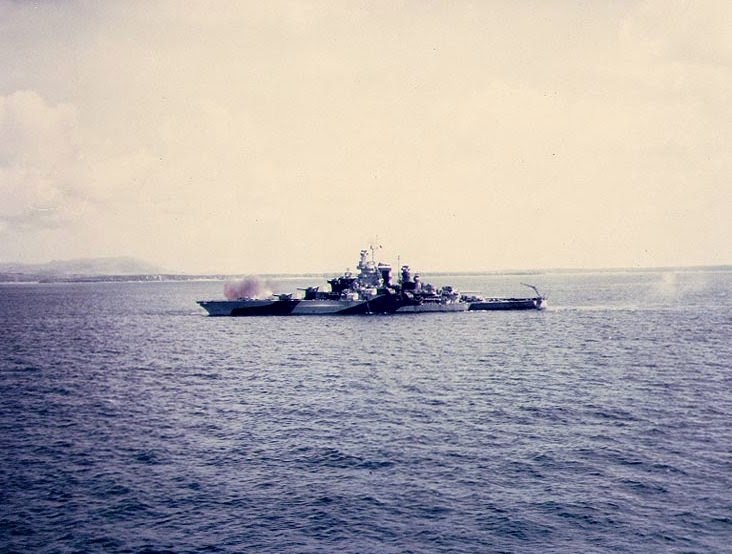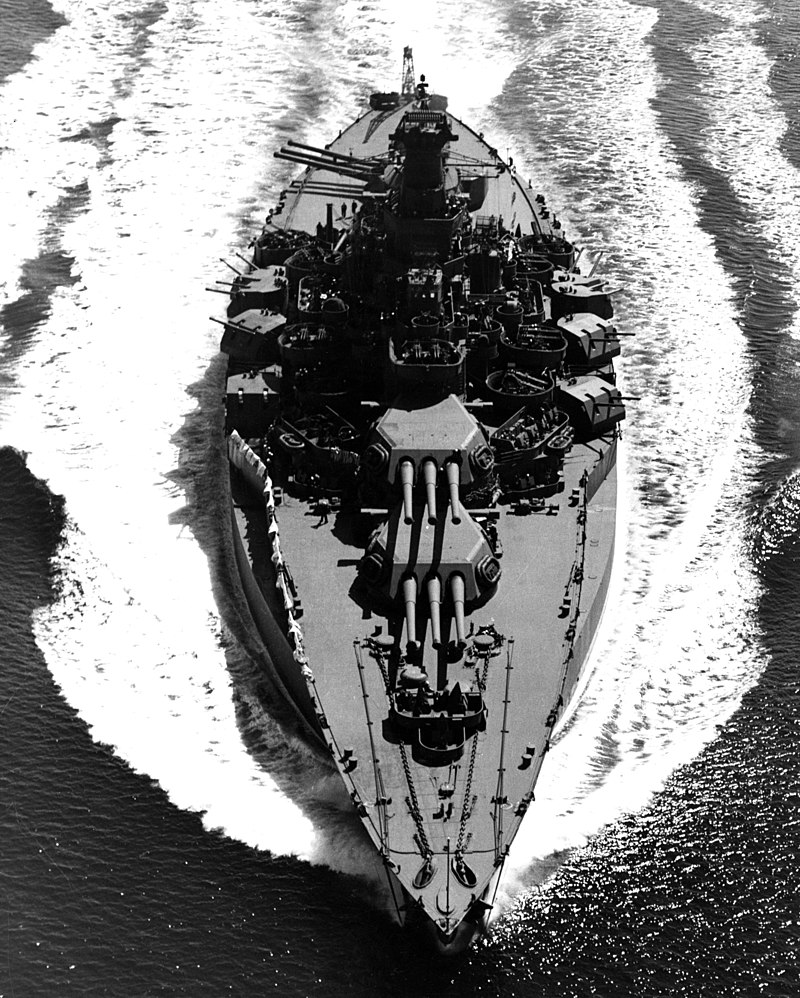The Tennessee Class started as a two ship class but a third ship was added in a special addendum on the outbreak of World War One. Last of the 12x14" gunned ships, the Tennessee and its siblings introduced upgrades to the previous New Mexico class. First the main armament was improved by raising the elevation of the guns to improve range. Second the hull had many more compartments built into it to aid against flooding damage caused by mine, torpedo or natural disaster (reef). This protection was shown to be needed with the loss of HMS Audacious to a mine strike, early in World War One. Third was the introduction of the turbo-electric drive to this class.

Tennessee as completed late 1918

Where the previous classes still had the lower hull casemates showing, the Tennessee class showed a flat hull profile. The turbo electric drive meant a two funnel arrangement in place of the single funnels of the previous classes.
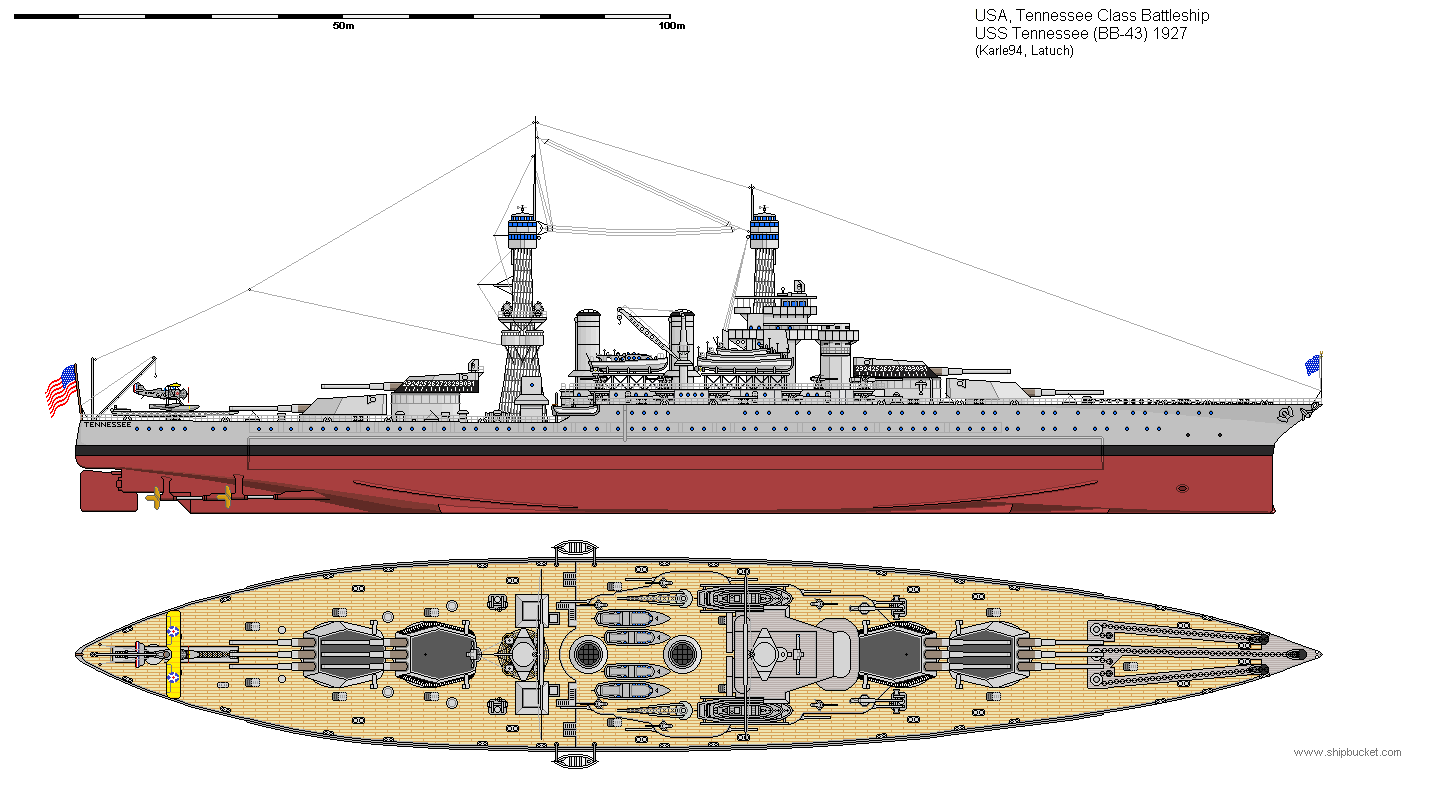
1927 and aircraft handling arrangements make their appearance. The single 3" AA guns of WW1 vintage are still aboard.

1935 and the more modern fittings are appearing. The 3"AA give way to the first 5"/25cal AA guns. A second catapult is fitted on 'X' turret.
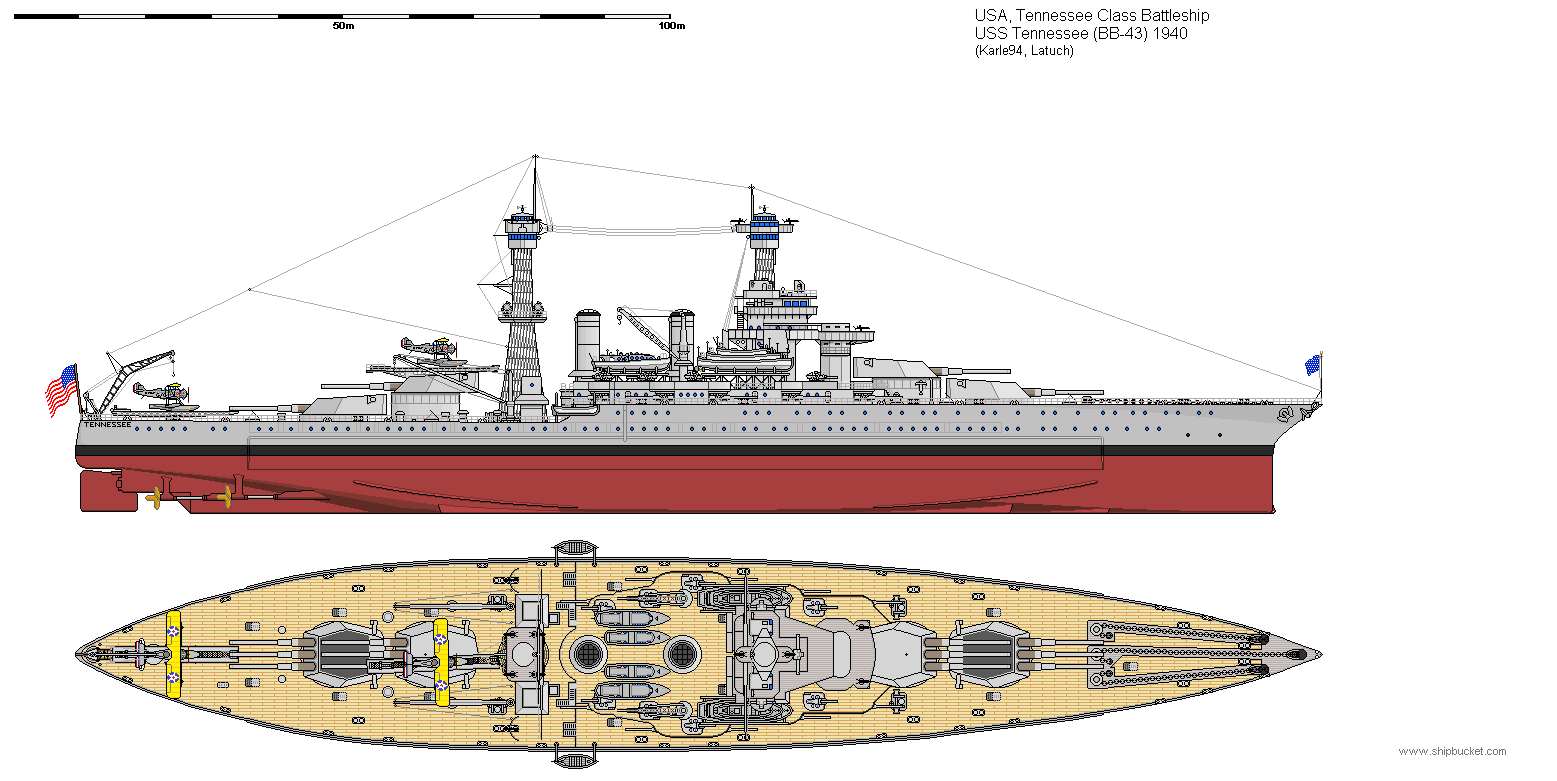
1940 and the class has had minor changes to improve protection for the 5"/25cal AA gun crews. This was the arrangement of the ships as they made it into 'Battleship Row' at Pearl Harbour, December 1941.
California and Montana are torpedoed and sunk. Tennessee receives bomb damage which is classed as minimal. California and Montana are raised, patched and dispatched to Puget Sound for rebuilding. Tennessee joins the other battleships in patrolling the Pacific Coast and escorting convoys. Tennessee joins the other two at Puget Sound for rebuilding in mid 1942. The three ships emerge in late 1943 looking like modern capital ships of the South Dakota class. The ships join the bombardment group and go and shoot at bits of sand for the rest of the war.
